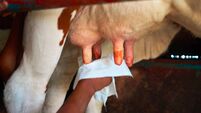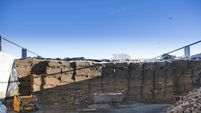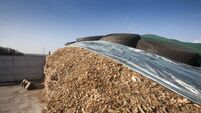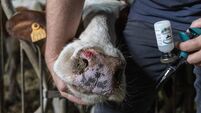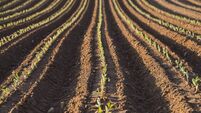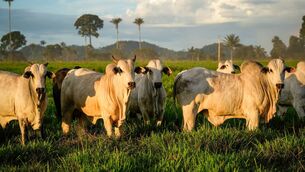Learnings from this year's calving season
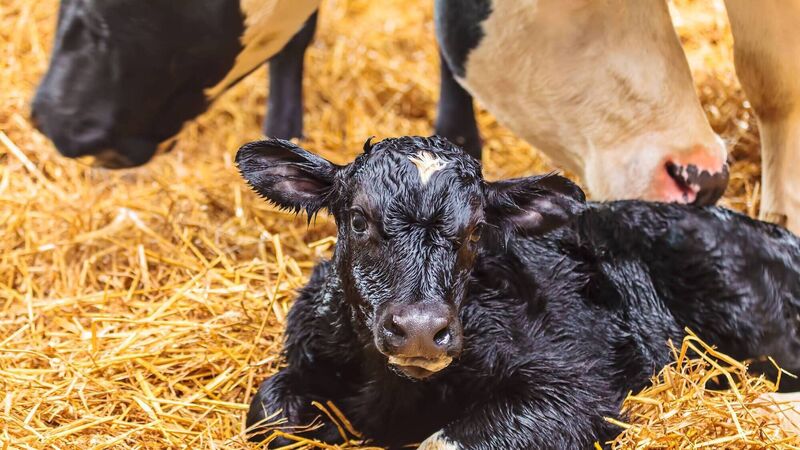
It may not be long since the last calf was born, if you are finished calving already.
Up until this week, the good weather always looked like it was constantly a week away. Thankfully, grazing and ground conditions have improved, and intakes from grass have begun to improve significantly.
We all need a big increase in growth rates and this will happen once air temperatures increase and the ground finally gets to dry off properly. As I write, ground in many parts is still very damp and we all need it to dry so we can make plans for silage ASAP.
It may not be long since the last calf was born, if you are finished calving already. Maybe now is a good time to review what happened and make plans for next year?
If you wait too long to review calving events, time will have lessened some of the problems and you may have difficulty matching the calving season with particular issues.
The first step is to list the casualties, if any occurred. Your calving notebook or herd management app should have the issues documented and a brief note on what happened to each.
Were your losses at calving or in the days post-calving? Did the issues predominantly involve first-calving heifers?
Was sire selection part of the problems, and does this need to be done more carefully, with attention being paid to easy calving sires across the herd?
If heifers were the problem, were they grown well enough? This could contribute to more calving difficulty than necessary. Does this indicate improvements are needed in Youngstock feeding and management in the first two years of their lives?
Were any losses in calves when they had reached 10 days to two weeks of age? This, of course, often means that calf scour has been a cause of death.
Calf scours can be more likely to occur in calves from first-calved heifers. Calves that receive inadequate amounts of colostrum within the first 6 hours of life are five to six times more likely to die from calf scours. Is it worth measuring colostrum quality in the first few cows and heifers that calf next season?
Then, you can make necessary adjustments to pre-calving diets if necessary. Some supplementary protein in the weeks before calving has been a gamechanger on many farms.
Calves that are born to thin heifers can be weak at birth and then receive less quality colostrum, which compounds their likelihood of getting a scour. Often, these same calves were born via a difficult delivery and add to the chances of getting sick.
All of this means that you could need to reassess the breeding heifer growing programme to assure that the heifers were in a body condition score of 3 at calving time. This applies in both suckler and dairy herds.
Do you use the same calving boxes each year for calving? The answer to this will almost always be yes. There may be a build-up of bacteria or viruses that contribute to calf scour in these boxes.
Ideally, calving boxes should be cleaned out and disinfected between each calving. However, on a busy farm in the spring during calving season, this is a virtual impossibility.
Now is the time to plan and make any necessary modifications to make cleaning out pens easier next season.
Maybe having two calving boxes or more will allow each to be cleaned out while the others are being used. It is always a good idea to get new calves and their mothers out of the calving boxes as soon as possible.
In suckler herds, bonding needs to take place before being moved to a larger group, but in the dairy herd, getting cow and calf out to their respective groups immediately has major benefits from a health point of view.
Based on this spring's calving events, consider:
Were any calves lost & what were the main causes?
- Calving difficulties;
- Scour;
- Respiratory issues;
- Would not suck;
- Inadequate colostrum.
Key questions to reflect on for your cows include:
- Were cows in the correct condition at calving?
- Were they getting clean good quality feed?
- Was sufficient protein supplied pre-calving?
- Had they enough space in the shed to eat and lie?
- Did they get pre-calver minerals?
- Were the minerals suitable to balance your forages?
Other points to consider, include:
- What disease control measures are in place on farm?
- What are you vaccinating for? BVD, IBR, Lepto, Salmonella, Scours, RSV & PI3- pneumonia are all ones I would recommend considering, testing where necessary.
Having collected the relevant information, you now need to research what may have caused issues to occur on your farm. Discuss your findings with your vet, who will have been involved in trying to deal with the issues on your farm if there were any.
Discuss with him or her the possibility of blood testing a cross-section of cows for disease, doing bulk milk sampling and mineral and vitamin analysis, and silage and forage analysis for minerals to match with blood/milk will give an even more complete picture.
If it's not broke, don’t fix it!
Hopefully, you had a good calving season. If so, don’t make too many changes to your system for next spring. What changes made this year made the calving season work better for you? Let us know on social media.

